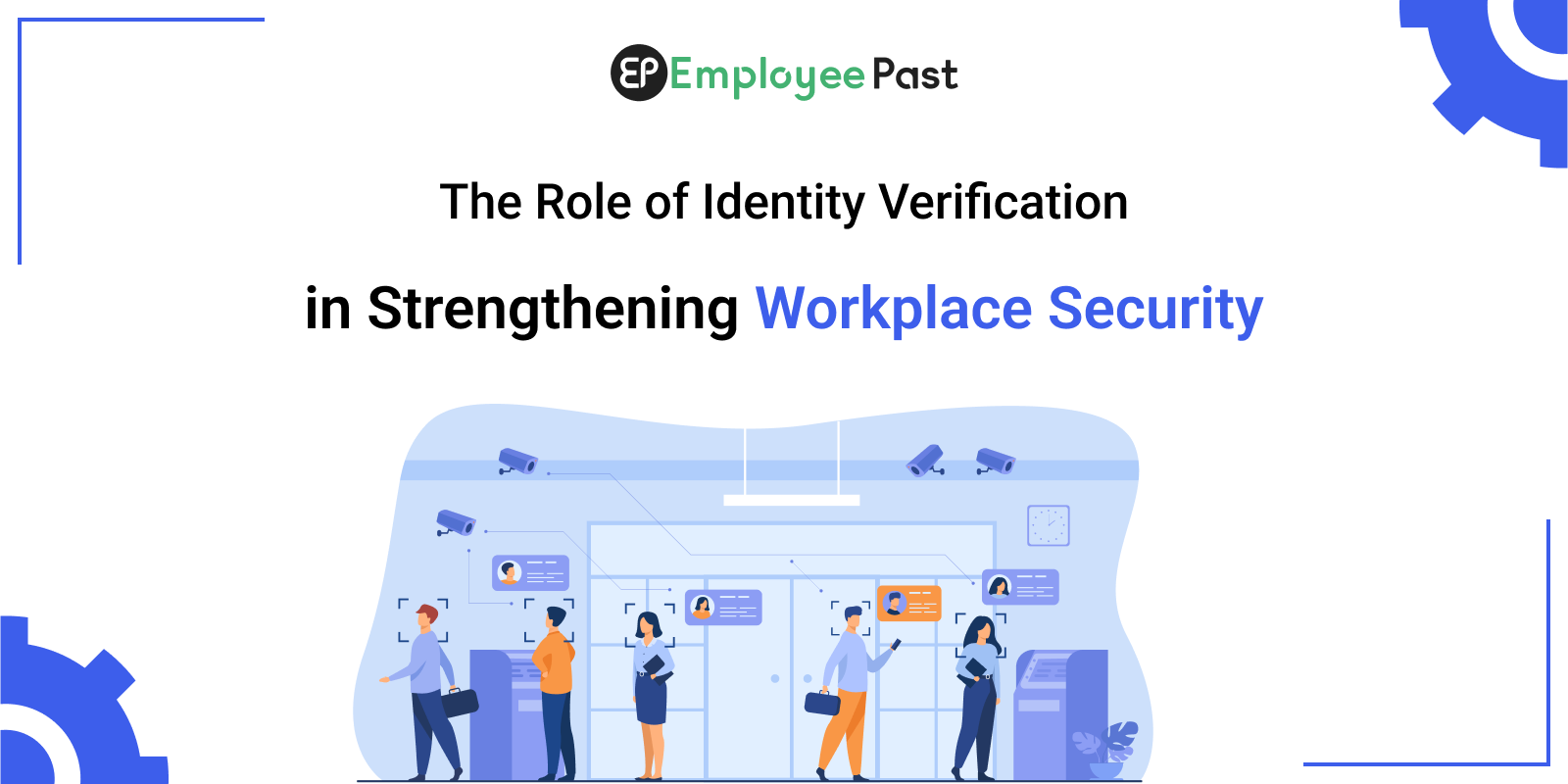In an era where workplace security is more crucial than ever, identity verification plays a pivotal role in safeguarding businesses from internal and external threats. Whether preventing unauthorized access, ensuring compliance with regulatory standards, or protecting sensitive data, a strong identity verification system is fundamental to a secure and efficient workplace environment.
Why Identity Verification Matters in the Workplace
With increasing incidents of cybersecurity breaches, fraud, and corporate espionage, businesses must implement robust identity verification measures. Here are the key reasons why identity verification is essential:
Prevents Unauthorized Access: Ensures only authorized personnel can enter company premises or access confidential systems.
Enhances Employee Accountability: Employees are held accountable for their actions, reducing the risk of fraudulent activities.
Safeguards Sensitive Data: Protects trade secrets, client information, and financial records.
Ensures Regulatory Compliance: Many industries have strict compliance requirements that mandate identity verification to avoid legal repercussions.
Key Methods of Identity Verification in Workplace Security
1. Biometric Authentication
Biometric technology has revolutionized identity verification in the workplace. This method ensures that only legitimate employees have access by using unique physical characteristics such as:
Fingerprint Scanning: One of the most widely used biometric authentication methods.
Facial Recognition: Utilizes AI to match facial features with pre-stored employee data.
Retina and Iris Scanning: Provides high-level security, often used in highly sensitive industries such as finance and healthcare.
Voice Recognition: Helps verify identity through unique vocal patterns.
2. Multi-Factor Authentication (MFA)
MFA enhances identity security by requiring multiple forms of verification before granting access. Common MFA components include:
Something You Know: Passwords or PINs.
Something You Have: Security tokens or smart cards.
Something You Are: Biometric verification.
By combining these elements, MFA significantly reduces the likelihood of unauthorized access.
3. Identity Verification via AI and Machine Learning
With the advent of artificial intelligence (AI) and machine learning, businesses can now detect fraudulent activity more effectively. These technologies analyze employee behavior patterns, identify anomalies, and flag potential security threats before they cause harm.
AI-driven verification systems help organizations:
Monitor Employee Activity in Real-Time
Identify Unusual Access Patterns
Prevent Credential Sharing or Theft
4. Digital Identity Verification Solutions
Digital identity verification involves using cloud-based solutions that authenticate employees remotely. These tools are especially valuable for companies employing a hybrid or remote workforce. Key digital identity solutions include:
e-KYC (Electronic Know Your Customer): Verifies employee identity through government-issued IDs.
Blockchain-Based Verification: Ensures a secure and tamper-proof record of employee credentials.
Document Verification: Cross-checks passports, driver’s licenses, or other official documents against global databases.
5. RFID and Smart Access Cards
RFID (Radio Frequency Identification) and smart access cards are essential tools for physical security in the workplace. These methods allow employees to access restricted areas using encrypted cards, reducing the risk of tailgating and unauthorized entry.
Benefits of Implementing Identity Verification in Workplace Security
1. Strengthening Physical and Digital Security
Implementing identity verification protocols helps businesses secure both physical locations and digital assets. Whether it's protecting server rooms or limiting access to classified databases, a well-structured verification system enhances security at all levels.
2. Reducing Insider Threats
Not all security threats come from external sources. Insider threats, whether intentional or unintentional, can pose significant risks. By tracking and verifying employee activities, organizations can minimize these risks and take preventive actions when necessary.
3. Improving Employee and Client Trust
Customers and employees need assurance that their personal and professional information is secure. A comprehensive identity verification process fosters trust, ensuring that only authorized personnel handle sensitive data.
4. Compliance with Industry Regulations
Many industries require businesses to comply with strict data protection laws, such as:
GDPR (General Data Protection Regulation)
HIPAA (Health Insurance Portability and Accountability Act)
ISO/IEC 27001 (Information Security Management Standard)
Failure to comply with these regulations can result in hefty fines and reputational damage.
5. Streamlining Onboarding and Offboarding Processes
Identity verification is critical in onboarding new employees and revoking access for departing ones. Automated verification systems ensure that only authorized individuals remain within company networks, reducing risks associated with former employees retaining access to confidential information.
Best Practices for Implementing Identity Verification in the Workplace
1. Adopt a Zero-Trust Security Model
The Zero-Trust model assumes that threats exist both inside and outside the organization. It requires continuous identity verification for access to critical systems, ensuring higher security standards.
2. Use AI-Powered Behavioral Analytics
AI-driven behavioral analytics help detect unusual activities by analyzing user behavior. If an employee tries to access unauthorized data, the system can trigger alerts and restrict access.
3. Regularly Update and Strengthen Authentication Methods
Keeping authentication measures up to date ensures protection against evolving threats. Companies should:
Replace outdated password-based systems with biometric authentication.
Implement MFA across all access points.
Conduct frequent security audits to identify potential weaknesses.
4. Educate Employees on Identity Security
Employees must understand the importance of identity verification and follow best security practices. Regular training sessions on password management, phishing attacks, and access control help mitigate risks.
5. Invest in Robust Identity Verification Software
High-quality identity verification software integrates multiple authentication layers to offer comprehensive security. Businesses should invest in advanced solutions that support real-time monitoring, AI-powered analysis, and regulatory compliance.
Conclusion
As workplace security threats continue to evolve, the role of identity verification becomes increasingly crucial. Businesses must adopt advanced verification methods such as biometrics, AI-powered authentication, and multi-factor verification to protect sensitive data, prevent unauthorized access, and maintain regulatory compliance. By implementing robust identity verification systems, organizations can ensure a secure and efficient workplace.













Share this post on: